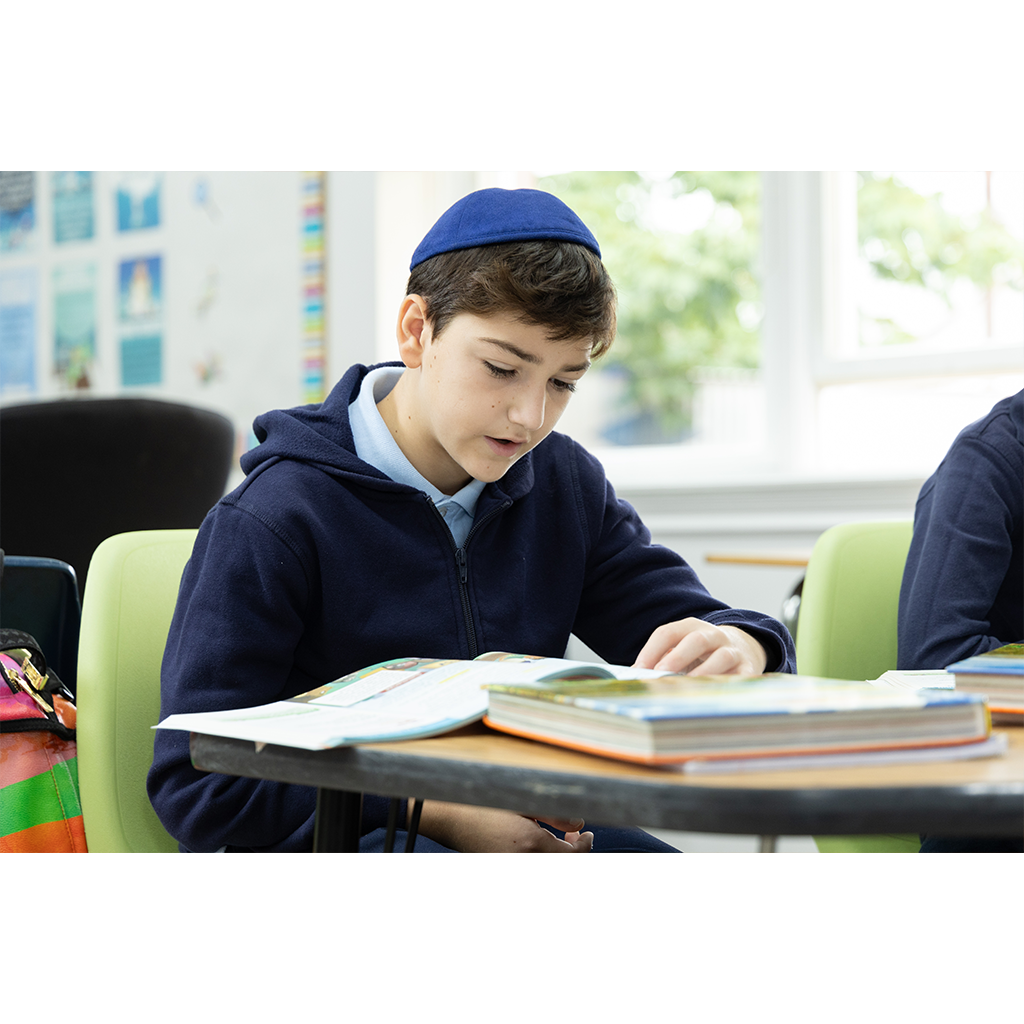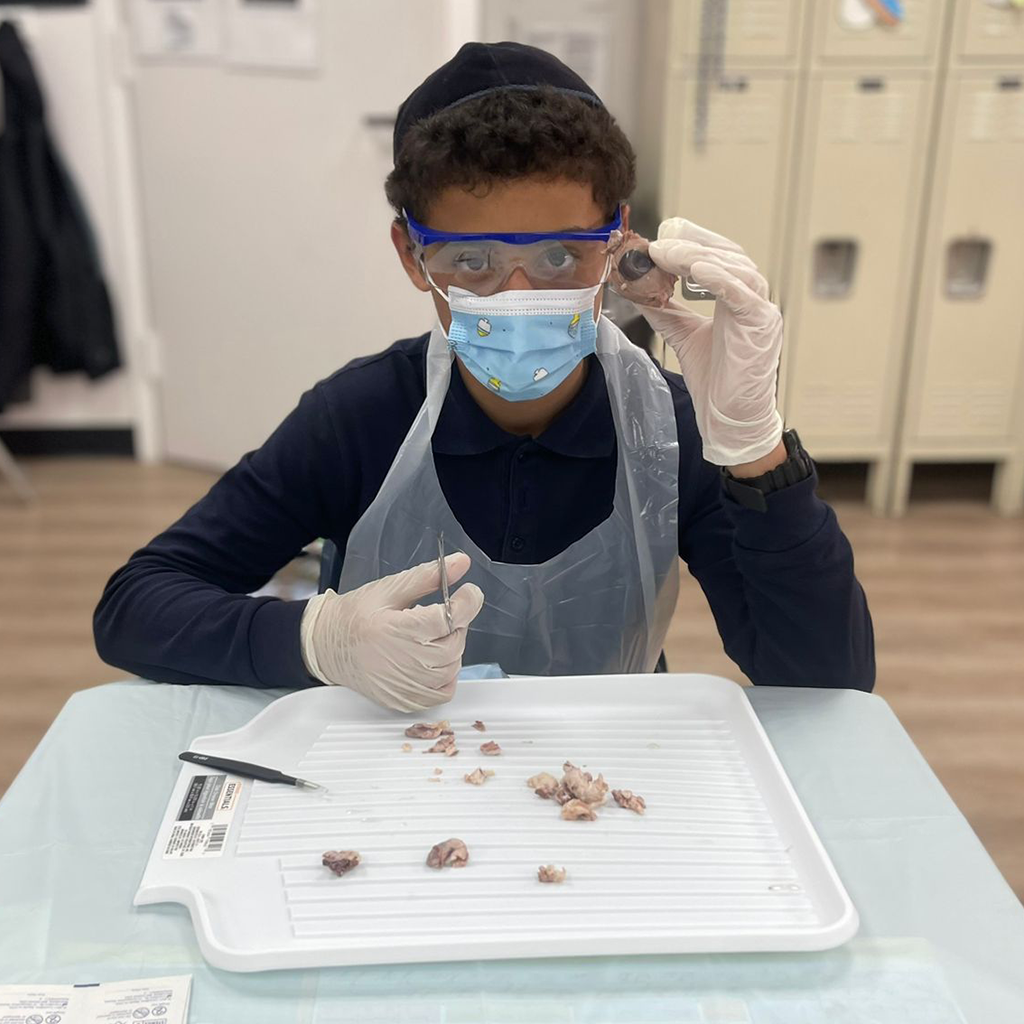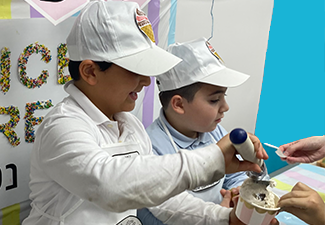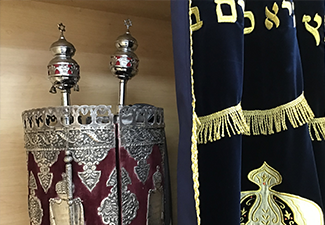
General Studies
Highly innovative professional teachers and staff use specialized methods and materials to engage formerly struggling learners who learn confidence as they acquire skills in an academically corrective setting. Following New York State curriculum guidelines the General Studies program provides an active and compassionate structural environment.
Curriculum Development
Gesher Yehuda provides an individualized curriculum designed to build upon a child’s unique strengths and gifts. Highly innovative professional teachers and staff use specialized methods and materials to engage formerly struggling learners who gain confidence as they acquire skills in an academically corrective setting. Following New York State curriculum guidelines, the General Studies program provides an active and compassionate structural environment.
Our commitment to precision teaching allows staff professionals to flexibly gear teaching methods to meet student needs. Verbal, visual and hands-on learning experiences engage the student’s attention fostering curiosity and minimizing distraction.
Both General and Judaic Studies teaching staff collaborate with therapists and educational directors on a regular basis to plan motivational strategies. As the student becomes more aware of his or her personal responsibility towards education and behavior in general, there is a carryover effect beyond the classroom environment.
Fundations/Wilson Reading Program
Fundations, and the Wilson Reading Program, are multisensory, structured language programs, which provide research-based materials and strategies essential to a comprehensive reading, spelling, and handwriting program, while laying the groundwork for life-long literacy. Students in grades K-3 receive a systematic program in critical foundational skills, emphasizing:
- Phonemic awareness
- Phonics/word study
- High frequency word study
- Reading fluency
- Vocabulary
- Comprehension strategies
- Handwriting
- Spelling
The instruction aligns with states’ rigorous college-and career-ready standards.
Wonders Reading Program
Using the Wonders Reading Program, students receive a comprehensive set of connected resources. The Wonders Reading program combines literacy with social emotional learning, helping students strengthen skills, bolster learning, and encourage independence, enhancing the important and inspiring work the students do in their classroom.
Students read widely across connected text sets, notice and annotate, listen and speak about what they have noticed, and write in the genre using an expert model or mentor text. Along the way, they are learning the elements of each genre, looking at the author’s craft, and gaining the skills they need to read independently.
By mastering the key features of each genre, students are better prepared to understand subject matter, read more broadly and deeply, and write about what they know. They will be ready to approach any text—whether their interests and curiosities draw them to literature, biography, nonfiction, or drama—and communicate effectively.
Students are encouraged to listen before speaking, speak before writing, and think critically—asking questions, finding text evidence, and building a more advanced set of literacy tools. With integrated grammar, spelling, and handwriting instruction, students build their capabilities every day.
Differentiated instruction is built into the resources and lessons, providing all students with the scaffolding or extensions they need to be an active part of their classroom community of learners. Students are provided with a collection of resources and instruction to move students ahead as soon as they are ready.
ThinkSRSD (Self-Regulated Strategy Development) Writing Program
ThinkSRSD is an evidence-based pedagogy that provides a framework for teachers to follow to teach each step of writing explicitly. It teaches students the writing process and how to use it and it equips them with the necessary skills and strategies to become self-regulated, successful writers. Through carefully analyzing peer-written exemplars and published mentor texts, ThinkSRSD exposes learners to the features of effective writing at the outset and all through the year. Explicit instruction prepares students to incorporate these features into their own pieces. They learn key strategies and solidify their skills through: collaborative writes, self/peer feedback and embedded deliberate practice. To facilitate a gradual release, teachers model writing, offer scaffolds and support and ongoing goal setting. These scaffolds lighten the cognitive load on students and help students translate their ideas onto paper more easily. Through ThinkSRSD, students will explicitly learn:
- The steps of the writing process
- The parts of a paragraph/essay
- How to plan and revise writing
- Positive self talk and self-regulation when writing tasks get challenging
- Self-scoring and goal setting
- Different types of writing and their texts structures
- Sentence expansion and variation
Handwriting Without Tears
The Handwriting Without Tears Program provides developmentally appropriate, multisensory strategies for early writing. The program follows research of how children learn best using materials that address all styles of learning.
- Multisensory activities and manipulatives appeal to all learning styles and provide a hands-on approach to handwriting.
- Teaches handwriting alongside other subjects. Fun letter lessons and writing activities connect handwriting to math, social studies, ELA, and science.
- Innovative letter order and style to promote easy learning for every letter.

Hebrew Language Arts
Gesher Yehuda’s Hebrew curriculum covers all relevant subjects including Hebrew Language Arts, Hebrew Reading, Hebrew Handwriting, Hebrew Grammar and Hebrew Speaking, The Hebrew program is a language acquisition program designed to enhance the curriculum and hone cognitive skills that are necessary for learning any language including English.
First and foremost, our efforts are focused on developing the executive functioning and knowledge acquisition skills required by special education students.
Niv Sifatenue Hebrew Reading Program
The Niv Sifatenue program is a full secular system based on three basic foundations:
- Teaching the concept of reading and syllabicating words in a structured way.
- As each new vowel is introduced, all previous vowels are addressed through cumulative review of words, sentences, and stories.
- Fluency is introduced through the use of illustrated sentences and stories.
Under the guidance of a Hebrew reading specialist, students practice regular Hebrew reading with an instructor, isolating individualized areas of deficiency and focusing on reading fluency. Each center provides an opportunity for students to read, write, listen and/or speak while learning to complete their work independently. Using technology and literacy centers students develop Hebrew literacy skills.
NikudQuest Program
The NikudQuest Decodable Book Library was carefully designed to help children apply existing word knowledge to read for meaning and pleasure. These books help build Hebrew language, reading fluency, confidence, independence and a love for reading. They span different topics to appeal to all types of children, from fables and narratives, to informational text and historical concepts.
Sod Haketivah Hebrew Handwriting Program
Handwriting skills are developed through Sod Haketivah, an innovative, immersive, and engaging handwriting program formulated by a certified occupational therapist with many years of experience in creating and teaching school-based writing skills. Through this program, students learn and review how to form the letters of the Hebrew alphabet using appropriate directionality of letter formation in a multisensory, engaging manner which allows for greater writing proficiency in a shorter amount of time.
Hebrew Grammar Program
Using grammar workbooks, teacher-made materials and Smart Board technology, students characterize Hebrew words and are given exercises to complete for each of the following areas:
- discovering and learning the structure of words (i.e., roots, prefixes and suffixes)
- noticing and becoming aware of synonyms and antonyms
- classifying words (according to gender)
- noticing and becoming aware of parts of speech (i.e., verbs, nouns, adjectives)
- incorporating key prefixes and suffixes to manipulate the formation of a word, changing its contextual meaning
Tal Am Hebrew Language Program
The school uses the renowned Tal Am Hebrew Language program, which features diverse instructional strategies. Language comprehension and sequencing skills are reinforced, to enable students to understand phrases and make logical connections. Words are reviewed in different ways using various modalities. Words from previous lessons are regularly reviewed to enable students to develop a core vocabulary. The students are taught and encouraged to translate new phrases, initially with verbal prompts and finally independently. The students learn through activities, songs and concrete experiences facilitated through the Hebrew environment in the classroom.
Safa Yaffa Hebrew Language Program
In our middle grades we use the Safa Yaffa program. The lessons are presented in a logical, clear, organized progression and incorporate constant review of material learned. The program uses its many components to complement each other and provides an enjoyable and effective learning experience. The teacher’s guide contains ideas for multisensory lessons and aids teachers in planning meaningful lessons to reach all types of learners. The goal of the Safa Yaffa program is to help build classes of confident Hebrew speakers and writers.
Mathematics
The mathematics program is designed to meet the individual needs of every student. The Educational Directors meet with each student and teacher to coordinate individual programs. Math and test taking skills strategies and concepts are taught using conventional aids, as well as concrete manipulatives. Simple to follow instructions help the student learn key skills and concepts. The programs utilized are:
SPOTS Math
The SPOTS Math program provides visual representations of numbers and operations, to break through their inherently abstract nature and make these constructs approachable for the younger student. The program’s predictability enables students to continually add layers of meaning to their knowledge base as they make connections from strand to strand in mathematics.
Spots for M.A.T.H. expands on the Dot Card system to advance students’ operational skills in a manner that fluidly builds confidence and automaticity while strengthening conceptual understanding. The Dot Cards used throughout provide constant visual reinforcement of concepts and strategies, ensuring lasting internalization of skills learned. In addition to the Dot Card system, Spots for M.A.T.H. employs other innovative and research-driven representational strategies, such as use of the “Empty Number Line,” as well as real-world problem solving.
The Spots for M.A.T.H. system has been extensively pilot-tested in over 80 classrooms and has been revised and fine-tuned to maximize its efficiency and effectiveness. It has successfully raised achievement levels and enhanced the learning experience for students of varied abilities and learning styles.
Sadlier Oxford Progress in Mathematics Program
Progress in Mathematics provides rigorous content focused on building deep conceptual understanding of key math skills and concepts at each grade level. It provides students with the foundational skills needed to become proficient in math and uses a consistent instructional approach, with stepped-out lessons, to help learners gain confidence and master skills. It strengthens students’ comprehension levels with ample opportunities to implement the Standards for Mathematical Practice.
Science
Scientific exploration naturally requires multi-sensory participation. Students are given the opportunity to observe, investigate and experiment using active learning to develop skills and insure comprehension. Focused discussions take place in collaborative groups while experimental recording sheets help categorize each unit of investigation and collection by organizing data and discussing results. Systems for science include:
FOSS, Full Option Science System
FOSS, Full Option Science System, which uses several instructional pedagogues including inquiry, hands on active learning, multi-sensory methods, student-to-student interaction, discourse and reflective thinking.
Science Fusion
In the Upper Grades we utilize Science Fusion. Science Fusion combines the interactive digital engagement today’s students expect, and the learning support they need, to advance in science with in-depth understanding.
Award-winning Digital Lessons and Virtual Labs, enhanced by more than 3,000 videos, animations, and simulations, create learning that lasts by enriching the print program with complementary content. It opens the door to a world of science beyond the classroom.
Social Studies / History
Social Studies content includes Geography; Mapping; Cultural Studies; History; and Civics.
The Social Studies program is an integrated course of study which includes all conventional elementary content. Students participate in discussion, reading, writing, study skills development, cumulative projects and field trips.
Other Classes

A student’s community is essential for healthy self-esteem. Rabbis and teachers provide visual exercises, hands-on study and field trips with a strong emphasis placed upon Jewish customs and heritage.

On Three Things the World Exists: Torah, service to Hashem and acts of kindness to others. Incorporating age-appropriate acts of kindness into the program syllabus is an integral component at Gesher Yehuda.

Each week our Rabbinic staff, and in honor of special occasions and chagim, our esteemed Rosh Yeshiva, Rabbi Mansour share insightful and family friendly commentaries on the Weekly Biblical Portion.